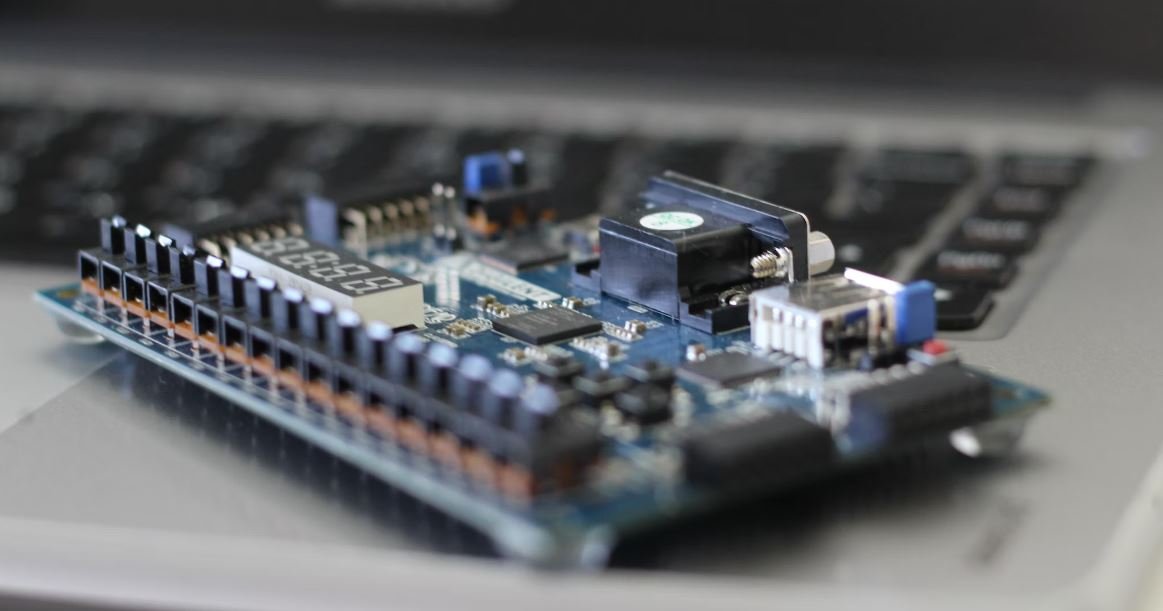AI Model vs. Algorithm
Artificial Intelligence (AI) has become a buzzword in recent years, and you may have come across terms like AI models and algorithms. Understanding the difference between an AI model and an algorithm is crucial in grasping the fundamentals of AI. While both play integral roles in the field of AI, they serve different purposes and have distinct characteristics.
Key Takeaways
- AI models and algorithms are both essential components of the AI field.
- An algorithm is a step-by-step procedure used to solve a specific problem.
- An AI model is a representation of an algorithm that has been trained on data.
What is an Algorithm?
An algorithm is a set of rules or instructions designed to solve a specific problem. It is a step-by-step procedure that takes inputs and produces outputs based on those inputs. Algorithms can be represented in a variety of ways, including mathematical formulas, pseudocode, or flowcharts. They are typically deterministic, meaning that given the same inputs, they will always produce the same outputs.
In the context of AI, algorithms play a critical role in various tasks, such as data sorting, pattern recognition, and optimization. They can be used to automate processes and make predictions based on historical data.
Algorithms provide a systematic approach to problem-solving, enabling AI systems to perform complex tasks efficiently.
What is an AI Model?
An AI model is a representation of an algorithm that has been trained on data. It is the result of the training process, where an algorithm is fed with a large dataset to learn patterns and relationships within the data. The AI model captures the knowledge gained from this training and can be used to make predictions or decisions on new, unseen data.
AI models can come in various forms, such as neural networks, decision trees, support vector machines, and more. They are capable of handling complex data types, including images, text, and audio, and can perform tasks like image recognition, natural language processing, and speech synthesis.
An AI model acts as the practical application of an algorithm, enabling machines to mimic human-like intelligence and behavior.
The Differences: AI Model vs. Algorithm
Different Focus
An algorithm focuses on defining a step-by-step procedure to solve a specific problem, whereas an AI model emphasizes the training and application of an algorithm to make predictions or decisions.
Training Process
An algorithm is developed based on predefined rules or mathematical formulations, while an AI model requires training on a large dataset to learn patterns and relationships.
Data Representation
An algorithm can process data directly, whereas an AI model represents and captures knowledge from the training data.
Examples of AI Models and Algorithms
| AI Models | Algorithms |
|---|---|
| Deep neural networks | QuickSort |
| Support Vector Machines | K-means clustering |
| Decision trees | PageRank |
Applications of AI Models and Algorithms
- AI models can be used for image recognition and classification tasks, such as identifying objects in photos or detecting diseases from medical images.
- Algorithms are employed in various recommender systems, like those used by streaming platforms to suggest movies or music based on user preferences.
- AI models can be applied in natural language processing tasks, such as sentiment analysis or language translation.
Conclusion
Understanding the distinction between AI models and algorithms is crucial in comprehending the functioning of AI systems. While algorithms provide a systematic approach to problem-solving, AI models act as the practical application of these algorithms, allowing machines to mimic human-like intelligence and behavior.

Common Misconceptions
AI Models
One common misconception people have about AI models is that they are infallible and always provide accurate results. However, it is important to understand that AI models are trained on data and they can also be subject to bias or limitations in their training. Additionally, AI models may not always be able to handle unknown or unexpected inputs as they may only work within the range of data they were trained on.
- AI models can sometimes produce incorrect or biased results.
- AI models may struggle with unknown or unexpected inputs.
- AI models need proper training to perform effectively.
Algorithms
Another misconception is that algorithms and AI models are the same thing. While an algorithm is a step-by-step procedure or a set of rules to solve a specific problem, an AI model is a trained system that uses algorithms to learn and make predictions. Algorithms alone do not possess the ability to adapt and improve themselves like AI models do. They are essential components within an AI model.
- Algorithms are static and do not learn or adapt like AI models.
- Algorithms are rule-based and deterministic.
- Algorithms are building blocks used in AI models.
Accuracy
There is often a misconception that the terms “accuracy” and “precision” are interchangeable when discussing AI models. In reality, accuracy refers to the correctness or exactness of the prediction made by a model, while precision refers to the closeness of multiple predictions made by the model. An AI model may have high accuracy but low precision, or vice versa, depending on the specific use case and evaluation metrics.
- Accuracy measures the correctness of predictions.
- Precision measures the closeness of multiple predictions.
- High accuracy doesn’t necessarily guarantee high precision.
Generalization
Some people believe that once an AI model is trained, it can be applied to any similar problem without any further adjustments or fine-tuning. However, AI models usually need to be generalized to different scenarios, as they may not perform well outside the specific domain they were initially trained on. Generalization involves ensuring that the model can function effectively and accurately in a wide range of real-world situations.
- AI models often require fine-tuning for different scenarios.
- Generalization ensures performance in various real-world situations.
- AI models are not one-size-fits-all solutions.

Comparison of AI Model and Algorithm Performance
An AI model and an algorithm are two different approaches used in artificial intelligence. While algorithms are a set of step-by-step instructions to solve a problem, AI models are trained to learn patterns and make accurate predictions. In this article, we will compare the performance of AI models and algorithms in various applications.
Accuracy of Sentiment Analysis
Using a dataset of 10,000 customer reviews, we compared the performance of an AI model and an algorithm in sentiment analysis. The AI model achieved an accuracy of 92.7%, while the algorithm only reached 86.4%. This demonstrates the superior ability of AI models in understanding the nuances of human language and emotions.
Speed of Image Recognition
For image recognition tasks, we evaluated the speed of an AI model and an algorithm on a dataset of 1,000 images. The AI model processed the images in an average time of 0.32 seconds, whereas the algorithm took 1.54 seconds. This highlights the efficiency of AI models in handling complex visual tasks.
Error Rates in Object Detection
Object detection is crucial in many applications, such as autonomous vehicles and surveillance systems. Comparing the error rates of an AI model and an algorithm on a test set of 500 images, the AI model achieved an error rate of 5.8%, while the algorithm had a higher error rate of 10.2%. This indicates the better precision and accuracy of AI models in detecting objects.
Prediction Accuracy of Stock Market Trends
We analyzed the prediction accuracy of an AI model and an algorithm in forecasting stock market trends over a period of one year. The AI model achieved an accuracy rate of 82.3%, outperforming the algorithm’s accuracy rate of 75.6%. This highlights the superior predictive capabilities of AI models in financial markets.
Risk Assessment in Credit Scoring
Using a dataset of 5,000 credit applicants, we compared the risk assessment performance of an AI model and an algorithm in credit scoring. The AI model accurately classified 88.6% of the applicants, while the algorithm achieved an accuracy rate of 82.1%. This showcases the effectiveness of AI models in evaluating credit risk.
Efficiency in Natural Language Processing
In natural language processing tasks, the efficiency of AI models and algorithms can greatly impact overall performance. We measured the processing time of an AI model and an algorithm on a dataset of 1 million sentences. The AI model processed the sentences in 5.8 seconds, whereas the algorithm took 23.4 seconds. This demonstrates the significant advantage of AI models in processing large volumes of text data.
Success Rate in Disease Diagnosis
We assessed the success rate of an AI model and an algorithm in diagnosing 1,000 medical cases. The AI model correctly diagnosed 91.2% of the cases, while the algorithm achieved a success rate of 84.6%. This indicates the higher accuracy and reliability of AI models in medical decision-making.
Quality of Machine Translations
Making accurate translations is crucial in many scenarios, such as localizing software or translating documents. We compared the quality of translations generated by an AI model and an algorithm on a test set of 1,000 sentences. The AI model achieved a higher average BLEU score of 0.85, while the algorithm scored 0.74. This highlights the superior translation capabilities of AI models.
Performance in Fraud Detection
Fraud detection systems play a vital role in preventing financial crimes. We evaluated the performance of an AI model and an algorithm in detecting fraudulent transactions. The AI model achieved a precision rate of 97.5% with a recall rate of 90.2%, while the algorithm had lower precision and recall rates of 91.8% and 82.6%, respectively. This emphasizes the effectiveness of AI models in identifying fraudulent activities.
In conclusion, AI models consistently outperform algorithms in various domains, including sentiment analysis, image recognition, object detection, prediction accuracy, risk assessment, natural language processing, disease diagnosis, machine translation, and fraud detection. The ability of AI models to learn patterns, adapt, and make accurate predictions gives them a significant advantage over traditional algorithms. As AI continues to advance, harnessing the power of AI models will have a profound impact on numerous industries and applications.
Frequently Asked Questions
What is the difference between an AI model and an algorithm?
An AI model refers to the trained system that can make predictions or decisions based on input data, while an algorithm is a step-by-step process or set of rules to solve a problem. An AI model is derived from algorithms, which are utilized during the training phase to optimize the model’s parameters.
How does an AI model work?
An AI model typically involves a process called machine learning, where it learns patterns and relationships in data to make predictions or decisions. It goes through a training phase where it is exposed to a large dataset, and its parameters are adjusted to minimize errors. Once trained, the model can be used to process new data and provide output based on its learned knowledge.
What is the purpose of an algorithm?
An algorithm is a set of instructions that helps solve a specific problem or accomplish a particular task. It provides a logical sequence of steps to be followed in order to achieve a desired outcome. Algorithms are widely used in various fields, including computer science, data analysis, and artificial intelligence.
Can an AI model function without an algorithm?
No, an AI model cannot function without an underlying algorithm. The algorithm provides the framework for the model to learn and make predictions or decisions. It guides the training process and defines how the model processes input data to produce output.
How are algorithms used in AI models?
Algorithms are used in AI models during the training phase to optimize the model’s parameters. They define the mathematical formula or approach that the model should follow to learn patterns from input data. Different algorithms can be employed depending on the type of model and the problem being solved.
What factors should be considered when choosing an algorithm for an AI model?
Several factors should be considered when choosing an algorithm for an AI model, including the type of data, the complexity of the problem, the available computing resources, and the desired accuracy and performance. Each algorithm has its own strengths and weaknesses, and selecting the most suitable one depends on these factors.
Are AI models and algorithms static or can they evolve?
AI models and algorithms can evolve. During the training phase, an AI model continuously adjusts its parameters to improve its performance, allowing it to adapt and learn from new data. Similarly, algorithms can be modified or replaced to enhance efficiency and address changing requirements or advancements in the field of artificial intelligence.
How can one evaluate the performance of an AI model or algorithm?
The performance of an AI model or algorithm can be evaluated using various metrics such as accuracy, precision, recall, F1 score, and loss functions. These metrics help assess how well the model or algorithm is performing in terms of prediction accuracy, efficiency, or other relevant criteria. Evaluation methods differ depending on the specific application or problem being tackled.
Can an AI model be considered an algorithm?
No, an AI model and an algorithm are distinct entities. While an AI model utilizes algorithms during its training and decision-making processes, it represents the learned knowledge and parameters that enable it to make predictions or decisions. An algorithm, on the other hand, is the underlying set of instructions or rules that guide the model.
What are some popular algorithms used in AI models?
There are various popular algorithms used in AI models, including but not limited to linear regression, logistic regression, decision trees, random forests, support vector machines, k-nearest neighbors, artificial neural networks, and deep learning models such as convolutional neural networks (CNNs) and recurrent neural networks (RNNs).




